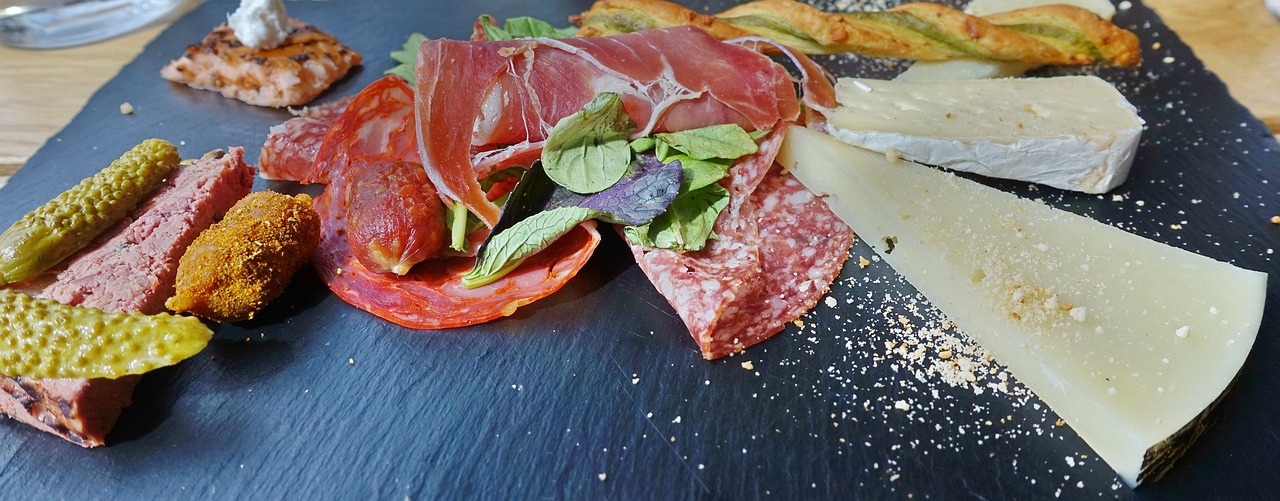Exploring the world of tapas: spanish small plates

When it comes to the culinary scene, Spain has a lot to offer. One of the best ways to experience the culture and flavors of Spain is through its tapas. These are small plates that are served in bars and restaurants throughout the country. They are a major part of Spanish food culture and have become world-famous for their variety and taste. Let’s delve into the world of tapas, exploring their history, the different types of dishes, and where you can find the best tapas bars in Spain.
The History of Tapas
The tradition of tapas has been part of Spanish culture for centuries. Its origins are steeped in history and tradition. The word ‘tapa’ literally translates to ‘cover’ or ‘lid’. It started as a small slice of bread or meat that bar patrons in Spain would place over their drinks to keep flies out.
A lire en complément : The essentials of cooking with wine
Over time, the humble tapa has evolved into an integral part of Spanish gastronomy. As the tradition developed, bar owners began to top these small slices of bread with more complex and tasty ingredients to encourage patrons to linger longer and order more drinks. This tradition turned into a social event that’s been woven into the fabric of Spanish society. Today, tapas are at the heart of Spanish food culture, where people gather to chat, enjoy a drink, and sample a variety of these delicious small plates.
Types of Tapas
There are countless types of tapas, each capturing the essence of various regions in Spain. The variety of these small plates is one of the main reasons why tapas have garnered international acclaim.
A voir aussi : The art of crafting homemade sushi
For example, the Andalusian region is famous for its fried tapas. A tapas journey in Andalusia will not be complete without sampling ‘pescaíto frito’ (fried fish). The fish is coated in flour, fried in olive oil, and served with a squeeze of fresh lemon. Another Andalusian favorite is ‘patatas bravas’; diced potatoes fried until crispy and then topped with a fiery tomato sauce.
Up north in the Basque country, tapas are known as "pintxos" and often come skewered on a piece of bread. Typical Basque pintxos might include ‘Gilda’, a skewer of olives, anchovy, and pickled peppers, or ‘txistorra’, a fast-cured sausage typically cooked in cider or red wine.
Tapas and Drinks Pairing
It’s not a tapas experience without a beverage to wash down these savory bites. Spanish people have a knack for pairing their tapas with the perfect drink.
A glass of wine is a classic choice when enjoying tapas. Spain boasts an impressive range of wines, from the robust Rioja to the crisp and bubbly Cava. The general rule of thumb is that the flavors of the tapas and wine should complement each other. A rich, meaty tapa would pair well with a full-bodied red, while a lighter, seafood tapa might be better suited to a white or rosé.
For beer lovers, a cana, a small beer, is also a popular choice. And of course, there’s always the option to enjoy your tapas with a glass of sherry, a fortified wine that originated in Jerez, Spain.
Best Tapas Bars in Spain
Spain is brimming with bars and restaurants serving tapas, but some stand out from the rest. In the heart of Seville, you’ll find ‘El Rinconcillo’, the oldest tapas bar in Spain. Founded in 1670, the bar has preserved much of its old-world charm and offers classic tapas like ‘jamon iberico’ (Iberian ham) and ‘queso manchego’ (Manchego cheese).
In Barcelona, head to ‘Cerveceria Catalana’ for some of the best tapas in the city. Their menu boasts an impressive array of dishes, from traditional tapas to innovative creations.
For pintxos, ‘Bar Zeruko’ in San Sebastian offers award-winning bites. Their modern and creative approach to pintxos has made them a favorite among locals and tourists alike.
Crafting Your Own Tapas
Creating your own tapas at home can be a fun and delicious endeavor. It’s all about selecting quality ingredients and showcasing them in simple yet flavorful ways.
A classic tapas dish to start with is ‘Gambas al Ajillo’, or garlic prawns. This dish is simple to prepare, requiring only prawns, lots of garlic, chili, olive oil, and a squeeze of fresh lemon. The prawns are sautéed in the garlic and chili-infused oil until they are pink and juicy, then finished off with a squeeze of lemon for a fresh kick.
Another easy recipe is ‘Pimientos de Padrón’, or blistered Padrón peppers. These small green peppers are fried in hot olive oil until their skin blisters, then sprinkled with sea salt. They make a great tapa as they are, but you can also serve them on a slice of crusty bread for an added crunch.
Whether you’re savoring tapas in a bustling Spanish bar or experimenting with recipes at home, these delightful small plates offer a window into Spain’s rich culinary culture. Their variety and versatility make them a favorite among food lovers all around the world.
Tapas Week: A Celebration of Spanish Cuisine
Every year, the Spanish tourism board organizes a week-long event known as Tapas Week, where hundreds of participating restaurants across the country offer special tapas menus. This gastronomic event is a fantastic opportunity for locals and tourists alike to sample a wide array of tapas, from the traditional to the innovative.
During Tapas Week, you can enjoy classic dishes such as ‘tortilla española’, a Spanish omelette made with eggs, potatoes, and onions, or ‘albóndigas’, Spanish meatballs served in a rich tomato sauce. Another popular dish is ‘pulpo a la gallega’, octopus served with boiled potatoes and sprinkled with paprika and olive oil.
Tapas Week is not just about food; it’s also a celebration of Spanish culture. Many restaurants host live music and flamenco performances, creating a vibrant atmosphere that perfectly complements the flavorful food. It’s a fantastic way to immerse yourself in tapas culture and experience the best of Spanish cuisine.
So, whether you’re a local looking to explore more of your country’s culinary heritage or a tourist seeking an authentic Spanish experience, Tapas Week is an event not to be missed.
Conclusion: The World of Tapas
Venturing into the world of Spanish tapas is more than just a culinary excursion; it’s a cultural journey. These small plates tell a story of Spain’s rich history, varied regional influences, and the Spanish people’s love for good food and company. Whether enjoyed in a bustling tapas bar in Spain or recreated at home, tapas carry a piece of Spanish soul in every bite.
From the humble origins of King Alfonso’s decree to keep flies out of wine glasses, tapas have evolved into a multi-layered cultural phenomenon that’s celebrated around the world. While the specifics of tapas may vary from plate to plate and region to region, the essence remains the same—a variety of small, flavorful dishes meant to be shared among friends, over conversation, accompanied by a glass of wine or beer.
So, whether you’re planning to visit Spain during Tapas Week or explore the fine selection of Spanish cured meats and cheeses at your local supermarket, remember that tapas are more than just food. They represent a way of life that emphasizes the joy of shared meals, relaxed conversation, and the simple pleasure of savoring every bite. So, here’s to the world of tapas—always diverse, always delicious, and always quintessentially Spanish.
